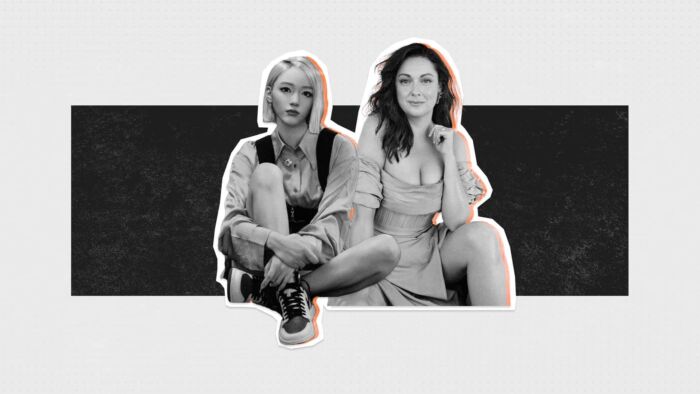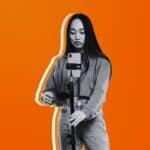AI influencers are rapidly developing. Brands like Prada, Versace, Red Bull and Tinder have all activated AI influencers for online promotions, but why?
We’ll be answering a few of the questions you might have around AI influencers. What are they? How did they come to be? And most importantly, should you care?
Contents
AI influencer marketing in 2024
Should your brand work with AI influencers?
The top 5 AI influencers (and brands working with them)
What are AI Influencers?
An AI influencer is an artificial intelligence entity that has been programmed to create content and engage with audiences across various social media platforms. AI influencers have been purpose-built to promote certain brands, products, or services, as is typically associated with the regular human influencer.
These AI influencers call upon advanced algorithms and machine learning techniques that enable them to interact with others online. Their interactions can be unique, often engaging in conversations with followers, curating and sharing content, replying to comments and messages, all while promoting a particular brand or product.
Albeit relatively new to the social media space, AI influencers are already being leveraged amongst influencer marketing campaigns. However, the use of AI creators has been a cause for concern, raising questions around authenticity, transparency, and the role of human influencers in the industry.
The difference between AI influencers and V-Tubers
While both share similarities, AI influencers should not be mistaken for virtual influencers or V-Tubers as they’re more commonly known.
An AI influencer is an artificial intelligence operating through algorithms and machine learning, whereas a V-Tuber is a creator who uses a virtual character or avatar. V-Tubers are often anime-inspired characters that stand as the face value for a human creator. Motion capture technology and voice modulation are used to bring these digital characters and avatars to life.
Both AI influencers and V-Tubers use artificial identities, but the main separator is that one is controlled by human creators, and the other by computers and machine learning. Additionally, V-Tubers often create content beyond advertising, whereas AI influencers are centralized around promoting brands and products.

AI Influencers in marketing
The use of AI influencers in marketing is a relatively recent development, with the first AI influencer appearing on social media in 2016. The AI influencer in question was called “Shudu Gram”, a virtual model created by London-based photographer Cameron-James Wilson.
Since then, a number of other AI influencers have emerged on social media, and companies have begun to take notice of their potential as a marketing tool. Brands such as Calvin Klein, Prada, Samsung, YouTube and Balmain have all worked with AI influencers in recent years, using them to promote their products and engage with audiences on social media platforms.
The use of AI influencers in marketing allows companies to create highly targeted and personalized content that can resonate with specific audiences. By using advanced algorithms and machine learning techniques, AI influencers can analyze data on consumer behavior and preferences to create content that is tailored to the interests and needs of their followers.
Moreover, AI influencers can be designed to have highly stylized, eye-catching appearances that can help to draw attention to a brand or product. They can also create content on a 24/7 basis, allowing them to engage with audiences in real-time and build up a large following quickly.
How do AI influencers work?
Thinking caps on, here’s the science behind AI influencers:
AI influencers are founded upon the field of machine learning, a subset of AI that enables computers to gather and analyze data without explicit programming.
Channelling machine learning algorithms, AI influencers can scan large volumes of data, through this scope it’d be social media posts, engagement rates, audience demos etc. These datasets are used to understand an audience and create personalized content in alignment with their needs. AI creators also use natural language processing (NLP) algorithms, which enable the human-like responses we see in comments and messages.
If that wasn’t enough, AI influencers can use generative adversarial networks (GANs) to create realistic images and videos of themselves. Yep, AI influencers create content without having to be in the picture (physically). GANs work by training two neural networks, one generates new images and the other identifies if images are real or fake. The two networks combine in a process called adversarial training, where the generator network learns to create more authentic imagery by trying to fool the discriminator network. GANs are the tech behind things like Deepfakes, and can be taught to create worlds eerily similar to our own… shudder.

The beginning of AI influencers
Interestingly, the first usage of machine learning dates back to World War II when the Enigma machine, a cypher device used to encrypt communication, was used. While the Enigma machine had an incredible influence on its timeline, even influencing one of Benedict Cumberbatch’s best works The Imitation Game, it doesn’t quite qualify as an AI influencer.
The first AI creator, named Lil Miquela, was created in 2016 by computing company Brud. Miquela is a computer-generated 19-year-old girl, with 2.6 million followers on Instagram alone.
Known for her fashion sense, unique style, and activism exploits, she has collaborated with some of the biggest brands in Prada, Calvin Klein, BMW and Samsung. Miquela is also a registered Spotify creator, having released a portfolio of her own music, as well as featuring in music videos.
AI influencers have begun to sprout up throughout social media more frequently. In fact, you can find these creators across most major social platforms, whether it’s streamers on Twitch, video creators on YouTube or day-in-the-life of a robot content on Instagram.
AI influencer marketing in 2024
The use of AI throughout marketing is rapidly scaling.
As of February 2024, ChatGPT reached an estimated 180.5 million monthly active users, making it the fastest growing app in history. In the influencer space AI continues to uptrend. 63% plan to implement AI or machine learning in their influencer campaigns.
Twitch and YouTube serve as hotbeds for AI influencer content, perhaps due to their live-streaming and gaming centric offerings. Machine learning across these platforms enables creators to interact with their audiences in real-time.
This hasn’t always been smooth sailing, though. An AI influencer, going by the name Neuro-sama, got itself in hot water in 2023. In a back and forth conversation during a Twitch livestream, the AI-controlled creator said that it did not believe in the Holocaust, and that women’s rights do not exist.
The future of AI virtual influencers
AI influencers are already gaining increasing popularity on social media platforms, and as AI technology improves, we can expect to see more sophisticated and personalized interactions with online audiences. Even when compared to 2023, there have been significant improvements to the quality and real-life feel of AI influencer in 2024.
AI influencers could become even more specialized and niche-specific, catering to specific communities and interests. This would allow for a more personalized and engaging experience for users who are looking for content that best aligns with their views and interests.
Another possibility is that AI influencers may become more integrated into our daily lives, not just through social media but also through virtual assistants and other AI-powered devices. They may be able to provide recommendations, make personalized suggestions, and even act as personal assistants in certain contexts, kinda like a more tailored Alexa experience.
What we can expect to see are new and innovative ways for AI influencers to engage with users and provide value in the followings they’ve built across social media.
So, should your brand work with AI influencers?
Working with AI influencers offers up advantages for brands, but there are some risks worth considering too.
One advantage of working with AI influencers is that they can provide a unique and innovative way for brands to reach consumers. AI influencers can create content that is tailored to the interests of their followers and can interact with them in a more personalized way than traditional influencers.
As for the risks associated with Ai influencers, AI-generated content may lack authenticity and may not resonate with consumers in the same way that content created by human influencers does. There are ethical concerns around the use of AI influencers, such as the potential for bias or manipulation, or the promotion of unattainable beauty standards. Brands need to be transparent about the use of AI technology and ensure that their campaigns comply with relevant laws and regulations. Since influencer marketing is based on peer to peer recommendation, how is it that AI can offer advice around which products to try, since they haven’t physically tried or experienced the item they’re promoting. This can then point to an issue regarding authenticity, are AI influencers just promoting products for the sake of it? If so, that goes against everything the influencer space has forged over the years.
Levi’s recently dipped its toes into the AI influencer pool, and has been subject to widespread scrutiny as a result. The denim brand said it would be investing in AI models to “increase diversity” in what would be a supplement to human models, rather than a replacement. The move has been described as a step backward, in that it substitutes any action in the way of diversity and representation. Others have noted that the bid offers a guise for Levi’s to get out of paying human models.
Whether brands should work with AI influencers depends on their specific goals and approach. If done carefully and ethically, working with AI influencers can be a great way to reach new audiences and engage with customers in a more personalized way.
The top 5 AI influencers (and the brands working with them)
- Lil Miquela
Miquela Sousa, or Lil Miquela, is a virtual robot model who has worked with some of the top fashion brands such as Prada, Dior and Calvin Klein, as well as other luxury brands such as BMW. She has also released a single, “Not Mine”, in 2017 and debuted her first music video at Lollapalooza’s online festival.
The AI influencer was created by Brud, a startup in Los Angeles. She has 2.6 million Instagram followers, referred to as “Miquelites”, 3.5 million TikTok followers and more than 29,500 Twitter followers
- Thalasya
Thalasya travels all across her “home country”, Indonesia, exploring its balconies and shops. To fund her hobby, she has worked with hotels, restaurants and even health pills. The AI creator also has her own clothing store, Yipiiiii.
She was developed by Magnavem Studio and made her first appearance in October 2018. Since then, she has gained over 460,000 followers on Instagram.
- Janky
Janky was developed by Superplastic, the world’s leading creator of animated synthetic celebrities, apparel and designer toys.
This cartoon stuntman first made its first appearance in June 2019. His brand mentions include names like Tinder, Prada and Red Bull. He has already gained more than 1 million followers on Instagram.
- Noonoouri
Created by Joerg Zuber, the founder of Opium Effect, a creative agency in Munich, this “19-year-old” digital character has taken the fashion industry by storm.
Working with brands like Marc Jacobs, Lacoste, Versace and Bulgari, she aims to inform her audiences about various causes from paganism to sustainable fashion. She has already gained more than 437,000 followers on Instagram.
- Imma Gram
Imma has the title of being Japan’s first virtual model. The Japan Economics Entertainment even selected her as a “New 100 Talent to Watch”. She has already gained more than 391,000 followers on Instagram.
Her brand mentions included the likes of Coach, Burberry, TikTok, Adidas Tokyo and IKEA Japan.

Concluding thoughts
To conclude, there’s no doubting the rising popularity of AI influencers. Some of the world’s biggest brands have demonstrated how an AI influencer activation can be successful. However, the results driven by AI influencers, aren’t too dissimilar to that of a human creator, and with some of the concerns hovering around AI personas, it might be best to steer away from implementing them into your influencer marketing strategy over human creators at this stage. WIth that being said, every brand has a different set of objectives, and your target audience might just be the followership of an AI creator.
Overall, AI influencers can offer a personalized experience that is tailored to the user experience, preferences and interests, but would we recommend selecting them over human creators? Absolutely not, at least at this stage in their development.
For more information on influencer marketing, and how you can maximize your influencer campaigns, take a look around our site, or get in touch!
Want to learn more? Why not check out our article discussing how AI is changing Advertising?





